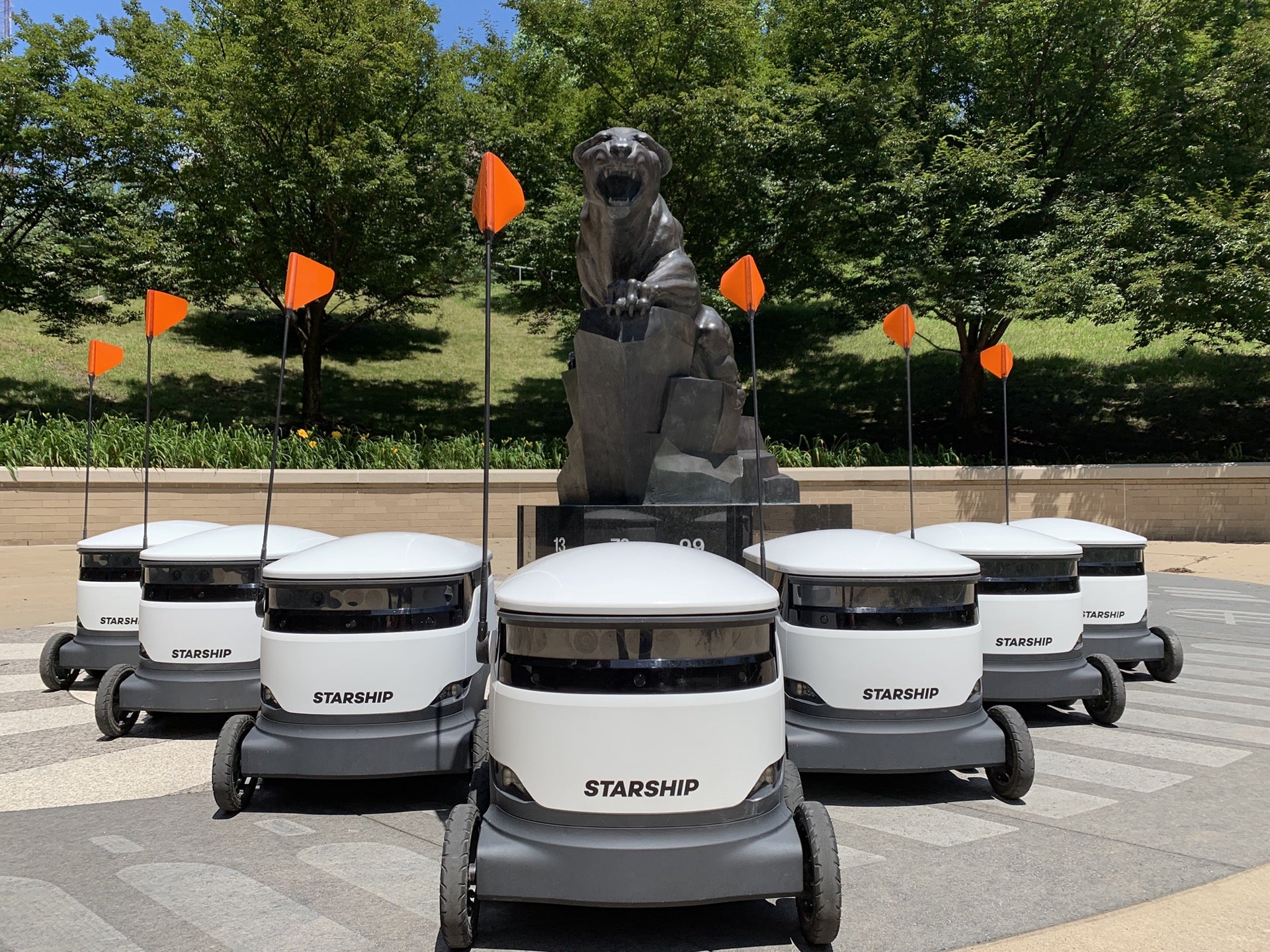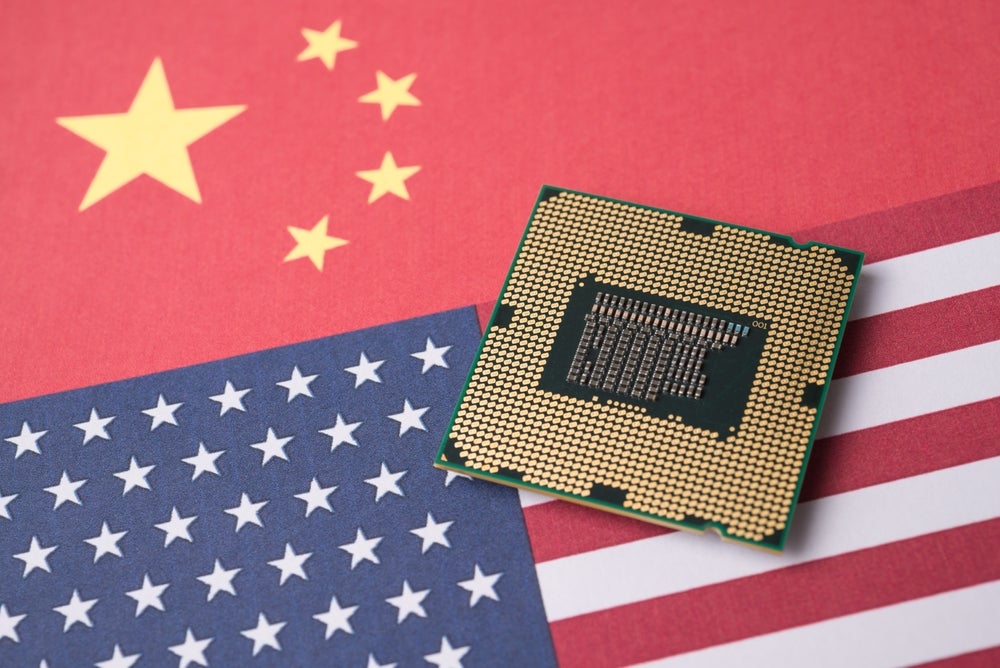
The new CEO of Starship Technologies says its delivery drones may give Deliveroo and Uber Eats for a run for their money, also revealing why its robot legion won’t show up in big city centres any time soon.
Alastair Westgarth makes the comments to Verdict after having officially joined the San Francisco-headquartered autonomous robotics company earlier in June. Before he had spearheaded Loon, an Alphabet subsidiary that aimed to deliver broadband coverage to underserved people in places like the Amazons and in East Africa using high-altitude balloons. Started in 2017, the subsidiary was shut down in January of this year.
While Loon had successfully provided both regular and emergency services like the ones in Puerto Rico 2017 after the US territory’s infrastructure was wiped out by Hurricane Maria, the project wasn’t sustainable, prompting the closure.
“I do believe strongly that it ultimately would have been a commercial success, but we were unable to connect all the dots,” Westgarth tells Verdict.
Westgarth has taken over the top job at Starship Technologies from CTO and co-founder Ahti Heinla, who stepped in as interim CEO after the former boss Lex Bayer quietly departed in December 2020 after nearly three years in the role.
When asked about why Bayer left, Westgarth replies: “I’m not sure. You know, he elected to move on, so we wish him well.”
Describing the weeks since he took over the mantle as “hectic”, Westgarth says he’s been “super-busy” learning about the business, the technology and the people in it – a challenge at the best of times, but one exacerbated by the Covid-19 pandemic.
Starship Technologies’ new CEO says the company is strictly following the Centers for Disease Control and Prevention’s recommendations in the States and equivalent rules in Finland and Estonia where its R&D teams are based.
Starship Technologies also has offices in London, Milton Keynes, Washington D.C, Mountain View, San Jose, Fairfax, Flagstaff, Pittsburgh, Dallas, Rotterdam and Hamburg.
Westgarth joined the company about seven years after Heinla and Janus Friis launched Starship Technologies in 2014. They had previously been two of Skype’s co-founders.
Heinla and Friis launched the startup after noticing how companies like Amazon and Domino’s were trialling flying drone deliveries. Despite the many trials, the duo reflected that airborne deliveries would be held back by regulations, societal scepticism and technological realities.
However, they believed ground-based delivery robots wouldn’t face the same problems. Thus, the seed to what would become Starship Technologies was planted.
Since the launch, the startup has raised $102m in total across several funding rounds, according to GlobalData. It most recently raised $17m in January this year from TDK Ventures, Goodyear Ventures and other investors. As for the company’s current valuation, Westgarth replies: “We do not share those numbers.”
Unlike airborne drone deliveries, Starship Technologies robots are already making over 10,000 deliveries in the wild every day. The startup has signed commercial agreements with 15 universities in the US and hope to grow that number to 25 by the start of the Autumn semester.
Starship Technologies has also rolled out drone fleets in towns like Milton Keynes and Northampton with similar commercial contracts. It is currently trialling the service in other areas too.
Starship Technologies competitors in the last-mile delivery space like Robby Technologies and Marble have also grown with similar partnerships.

However, don’t expect to see white Starship robots cruising down the streets of central London or New York anytime soon.
“We’re not going to be a great solution for, say downtown Manhattan, because we’re not designed to serve 50-storey buildings, multi-tenant buildings,” Westgarth says. “We’re designed to do a sidewalk delivery to a home, to a classroom area, to a dorm, to a small, single-storey business, things like that.”
Instead, the drones are designed to deliver goods within small areas like campuses or towns within a 6km delivery radius.
“So London outside the core is great,” Westgarth explains. “The sidewalks are everywhere. They’re in really good condition, the density is dominated by one or two storey buildings. That’s the type of area [Starship can deliver in].”
These are the droids you’re cooking for
Delivery robots have been touted as the next step for food-delivery ventures like Deliveroo, Uber Eats and Grubhub, many of which are actively pursuing solutions towards this end.
Uber recently invested in Serve Robotics, the spun-out robotic division of on-demand delivery company Postmates that Uber acquired for $2.65bn in 2020.
Similarly, DoorDash acquired autonomous vehicle technology Scotty Labs in 2019, after having taken part of a trial with Starship Technologies in 2017.
And it makes sense why food delivery ventures are looking to take out the human riders from the equation.
“If you are a pure labour-based solution you have a fundamental blocker on your unit economics: you have to pay minimum wage, and hopefully more, to the individual that’s riding a bike or walking down the road,” Westgarth says.
Indeed, one of the major reasons why Deliveroo bungled its public debut in March was because investors had expressed concerns about using gig economy workers, saying it wasn’t a sustainable business model. As a consequence, Deliveroo lost almost a quarter of its value on the day of its UK float.
In comparison, drones like the ones provided by Starship Technologies have several advantages over human riders.
“A robot is a fixed price and you don’t have to tip it and it doesn’t have an hourly rate,” Westgarth argues.
“Our hourly rate really is our amortised costs of our hub prime or remote operators and the electricity to charge the battery. So, for short distance, low-value baskets, it’s very difficult for labour driven models to be cost effective. Now, larger basket size and longer distances? That’s a different dynamic.”
Unsurprisingly, Starship Technologies is on the lookout for partnerships with companies in the food-delivery sector.
“If somebody – say from Grubhub or Deliveroo or whatever – wanted to talk about a partnership where some portion of their new business or existing business would like to evaluate doing robots, we’re happy to do that,” Westgarth says.
At the moment, the new CEO is adamant that it doesn’t compete with these food-delivery companies, mostly because he says that they don’t exist on the university campuses it’s partnered with.
However, he is predicting that Starship Technologies may end up competing with these businesses as it grows beyond universities.
“On campus there was no Grubhub, there was no Uber Eats,” Westgarth says. “They don’t do that. But if the student orders off campus? Yeah, there’s some level of the markets crossing over each other somewhat. Could a student have gotten their food item on campus? Maybe. But at the end of the day, we currently don’t go pick the stuff off campus [but] we anticipate on a growing basis we probably will.”
For now, though, Starship Technologies’ new CEO plans to focus on steadily scaling the startup.
“Our major items are expanding our service both within neighbourhoods and universities, and we continue to work on our unit economics because we’ve just had massive improvement of those numbers over the course of last 12, 24 months and we want to continue that trend so that every portion of our business is profitable and on an increasing basis,” Westgarth concludes.







